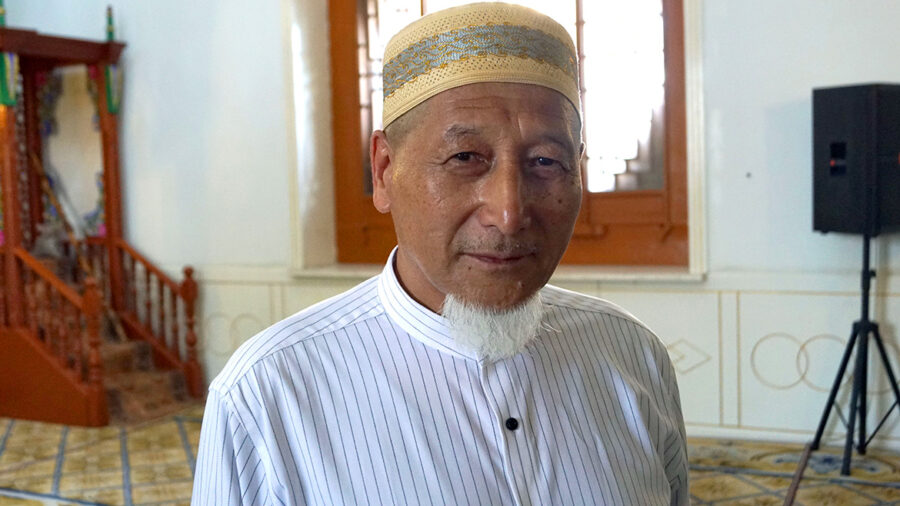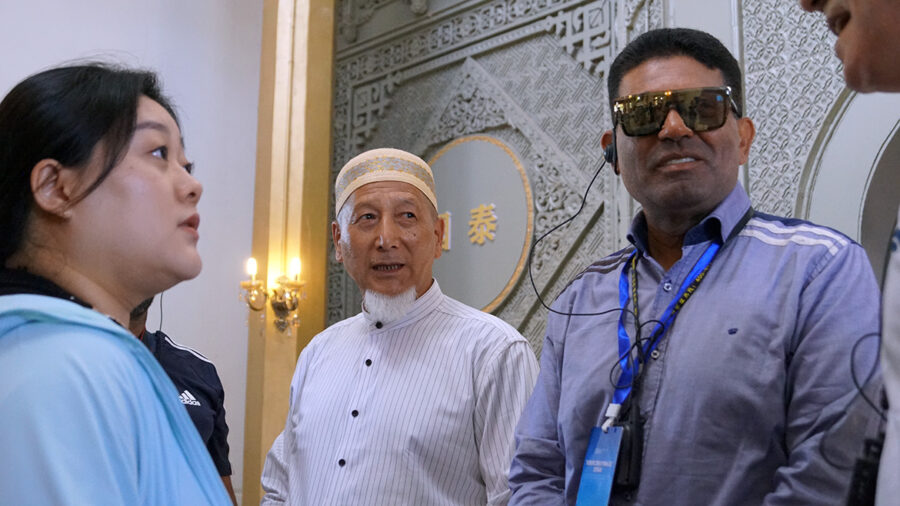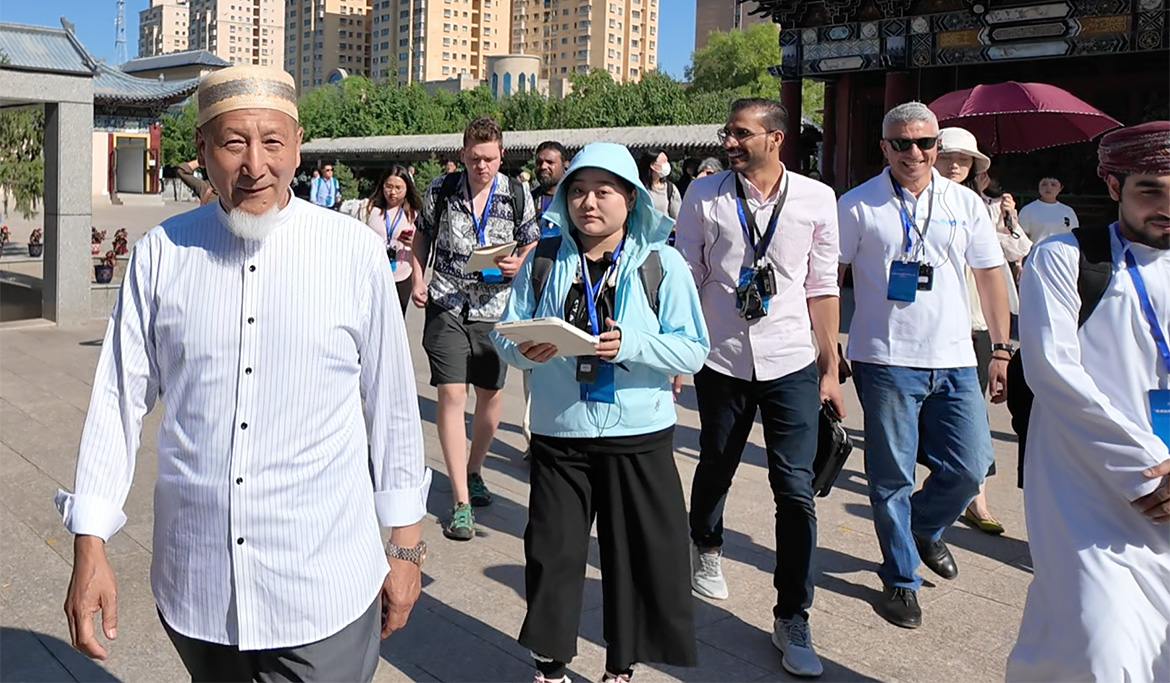NewsVoice and journalists from other countries were invited to visit the Shaanxi Grand Mosque in Yining County, Xinjiang. The mosque is a reminder of the region’s diverse history and past cultural exchanges.
The mosque is located on the south side of Xinhua East Road in Yining County, Ili Kazak Autonomous Prefecture. It stands as a historical and cultural landmark with a rich heritage dating back to 1781. The mosque and the protections by the Chinese government also attest to the mixed religious culture in China’s most ethnical dense area, with a variety of coexisting ethnic groups.
Xinjiang has 10 Islamic ethnic minorities. The indigenous inhabitants are the Uygur (10 million), Kazak, Hui, Kirgiz, Tatar, Ozbek, and Tajik. The ethnic groups Dongxiang, Salar, and Baoan have migrated from other areas.
The Mosque was named after the large number of Shaanxi Muslim soldiers who came to Xinjiang during the Qing Dynasty, 1644 to 1911. According to Tianshannet, the 3,000-square-meter mosque was originally built to accommodate the religious needs of Hui Muslim soldiers from Shaanxi, Gansu, Ningxia, and Qinghai, writes China Today.
According to local sources, these soldiers remained in the area to quell rebellions, and the Qing government established the mosque to support their spiritual practices.
The Shaanxi Grand Mosque exemplifies the fusion of Central Plains culture and Arabic decorative styles, reflecting the architectural blend that characterizes many historical sites in China.
Religious freedom in Xinjiang
In 2010, the mosque underwent a significant restoration to maintain its original size and style as mandated by the autonomous regional government. The effort ensured that the mosque retained its historical integrity while continuing to serve as a place of worship.
”The Shaanxi Grand Mosque proves that our border area has had close contacts and exchanges with other regions of China,” said Imam Ma Jirong, the vice president of the Islamic Association Yili Prefecture, as well as Imam of Shaanxi Grand Mosque of Yining City, in an interview for Tianshannet.
”It also proves that Xinjiang has been an inseparable part of China’s territory since ancient times,” he goes on.
The mosque’s prayer hall, covering around 2,100 square meters, hosts the five daily worship services, Friday prayers, and Islamic festivals. The mosque remains open to all Muslims for worship and religious study. Its reading room, which contains over 2,000 copies of the Koran and other religious scriptures, is open throughout the day.

Imam Ma Jirong, a 63-year-old native of Shaanxi Province, has served at the Shaanxi Grand Mosque for more than a decade. His connection to the mosque is deeply rooted, as his father served as an imam there for 50 years. ”My father shared a lot of religious insights at the mosque, so I followed him to study Islam and later also studied at the China Islamic Institute,” Ma recounted.
The Shaanxi Grand Mosque symbolizes the religious freedom in Xinjiang. For centuries, the cultures of all ethnic groups in the region have been exchanged, passed on, and developed, enabling the full respect of freedom of belief.
Aidan Jonah, a journalist from Toronto, Canada, mentions separatism and asks how Islam is compatible with socialism in Xinjiang. Ma Jirong answers that Islam is based on compassion, so how can Islam not be compatible with socialism?

Report, text, photo, and video by Torbjorn Sassersson, NewsVoice
Related and source
- NewsVoice: Uyghur Cotton Farming in Xinjiang – Tech Modernization Creates Rural Welfare
- NewsVoice: Xiong’an New Area – China’s City of the Future
- China Today: An Open Xinjiang with Multi-Ethnic Beliefs

